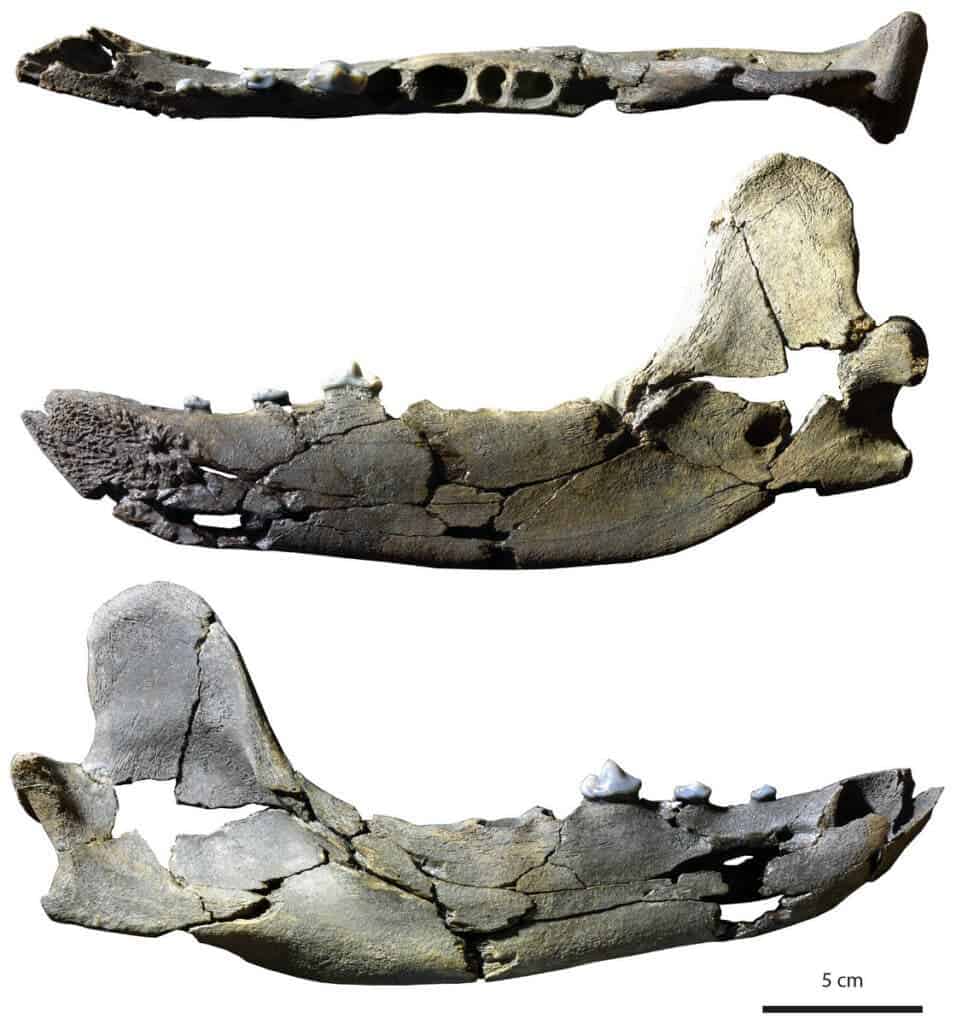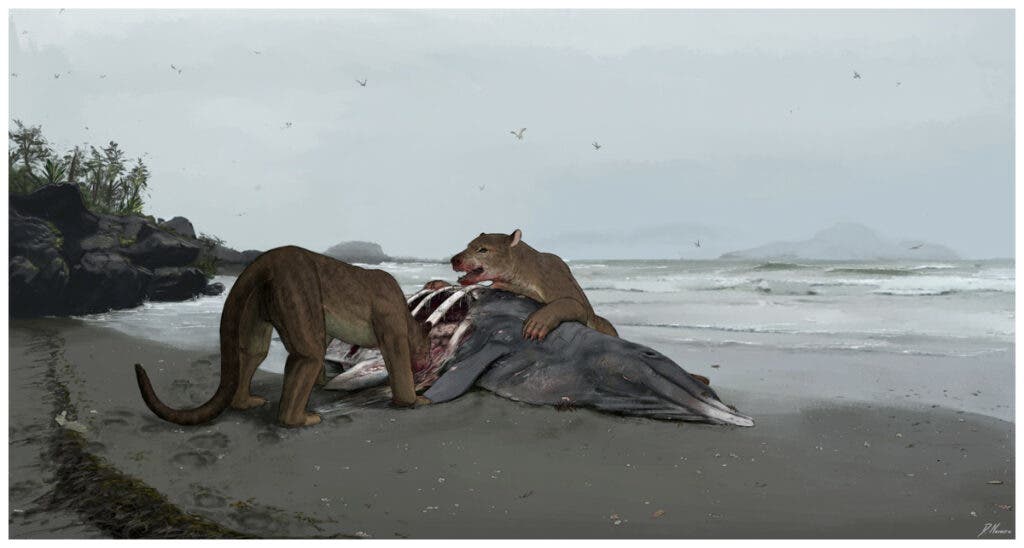An international team of archeologists led by members from the Natural History Museum Basel has described a new species of extinct “bear dog” that lived in Europe between 36 and 7.5 million years ago.

The species was described from a fossilized lower jaw discovered in western France in the Sallespisse commune of the Pyrénées-Atlantiques. The fossil shows a unique fourth lower premolar, a tooth that is particularly important in the determination of species and genera.
Based on the morphology of this tooth, the team determined that the jaw belongs to a previously-unknown species of animals, which the team christened Tartarocyon cazanavei. The name comes from a large, one-eyed giant from Basque mythology, Tartaro.
Bear-dog
Although the Tartaro is part of Basque mythology, the legend is also part of local folklore in Béarn, the region where the lower jaw was found.
According to the team, the jawbone is indicative of an extinct group of carnivores related to dogs, cats, bears, seals, and badgers, named Amphicyonidae. They were widespread across Europe throughout the Miocene (23 to 5.3 million years ago) and were a very diverse group. Amphicyonidae species ranged in size from around 5 kgs to 770kgs and had wolf-like and bear-like features. They disappeared from Europe some 7.5 million years ago.

The genus was first identified in the early 19th century and its name, selected in 1836 by French geologist and paleontologist Édouard Lartet, means “ambiguous dog”. Amphicyonid fossils have so far been discovered in Nebraska, North America, as well as in France and Spain.
They were obligate carnivores — eating meat exclusively — and most likely first evolved in North America around 45 million years ago. From there, they spread to today’s Europe, Asia, and Africa, becoming widespread at the onset of the Miocene. Their extinction was likely driven by the emergence of modern canids such as wolves, who out-competed them for prey.
Not only is this a discovery of a new species, but researchers can also use this jaw bone to further study the way the climate was shifting during the mid-Miocene and the way prehistoric animals made their way across the landscape. It offers paleontologists the opportunity to explore the evolution of European bear-dogs against known environmental events at that time.
The paper “A new gigantic carnivore (Carnivora, Amphicyonidae) from the late middle Miocene of France” has been published in the journal PeerJ.
Was this helpful?



